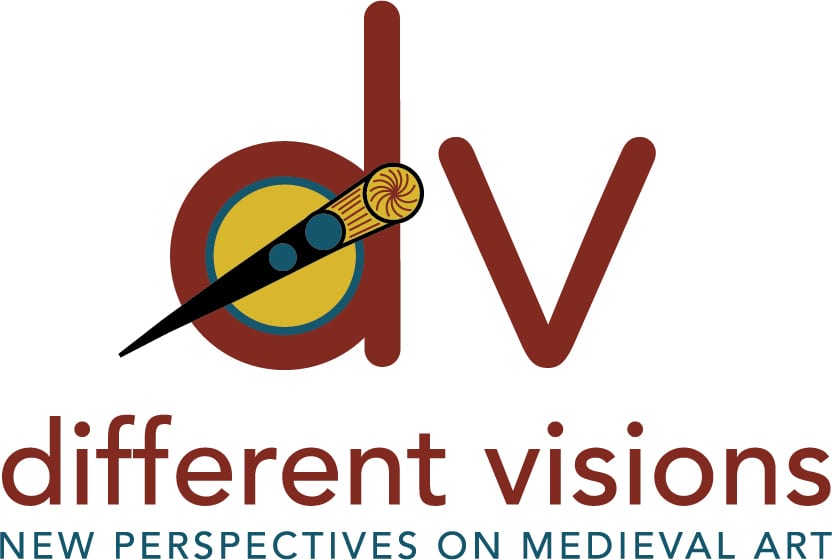Call for Proposals

Peter Brathwaite’s recreation of Mansa Musa from the Catalan Atlas (about 1375), 2020.
Following our first special issue, Encountering Medievalism, this second volume in the two-part series further investigates art historical medievalisms, with a focus on how medieval visual and material culture has been imagined, collected, adapted, and deployed in contexts shaped by fantasy, nostalgia, or revivalist aesthetics, as well as by colonial, orientalizing, and nationalist agendas.

Thomas Cole, The Past and The Present, 1838. Mead Art Museum, Amherst College (1950.189-190).
We welcome contributions that examine the confessional, personal, anecdotal, whimsical, or nostalgic dimensions of medievalism—modes that can themselves be fraught or problematic, yet also reveal much about the power of “the medieval.” At the same time, we seek contributions that grapple with the enduring legacies of these frameworks and their implications for both public perception and scholarly understanding of the Middle Ages. Essays may focus on art, architecture, design, display practices, and other visual traditions—especially those shaped by or responding to imperial or appropriative narratives. We encourage contributions that highlight how medievalism has been a site of pleasure, play, imagination, and creativity, while also critically engaging with the power structures—economic, racial, gendered, and political—that have underpinned the making and circulation of medievalisms. Contributors are encouraged to think expansively and critically about “the medieval” as a mutable and contested category.

“The Tuck Box” by Jim Nix, CC BY-NC-SA 2.0.
This issue invites scholarly essays, hybrid-format, and non-traditional contributions that explore:
- Museums and private collections that frame medieval art through nationalist or orientalist ideologies or that incorporate medievalism in the galleries, online, or in public programming
- Historicizing architectural projects (from Gothic revival to 20th-century fantasy and fairytale aesthetics)
- Medievalisms in the Americas, Asia, or the Middle East that challenge Eurocentric art-historical narratives
- Stained glass, textiles, metalwork, fashion, or painting designed or reinterpreted in medievalizing styles (e.g., Tiffany, Morris & Co., #TikTokMedieval)
- Digital or contemporary artistic medievalisms that reckon with or subvert historical models
- Case studies of specific objects or sites reframed through art historical medievalism
- Re-enactment as a culture and historical excavation, such as the Society for Creative Anachronism (SCA). We welcome contributions similar to this video about the Fior di Battaglia, a fencing and combat manual from early fifteenth-century Italy
- Medievalism as pedagogical tool (making manuscripts, building a cathedral, using astrolabes, forging pilgrim badges, etc.)
- Regionally-specific and place-based approaches to medievalism as a way of connecting communities to global histories and rethinking local medievalisms (recent projects in the United States have drawn attention to the presence and reinvention of “the medieval” in local contexts. Examples include Medieval DC, a digital guide to Washington, D.C.’s medieval-inspired sites; Medieval New York, which highlights the city’s rich resources from The Cloisters to The Morgan Library; Medieval Baltimore, a student-centered project tracing medieval resonances across Baltimore’s monuments and archives; and Medieval California, a multi-year ongoing collective of scholars that examines the varied meanings of the Middle Ages in the state’s landscapes, built environments, popular culture, and themed spaces, with a land-based focus on Indigenous sovereignty, history, presence, and futures).

We also invite reflections on the limitations of “medievalism” itself as a framework. In particular, we recognize that Indigenous scholars and communities may not relate to or identify with this category, especially when it is bound to settler colonial timelines and epistemologies. Inspired by the work of Tarren Andrews, Tiffany Beechy, and others, we welcome contributions that rethink or unsettle medievalism from Indigenous perspectives—especially where those perspectives foreground temporal sovereignty, relational knowledge, and the ethics of kinship and reciprocity. We also welcome proposals that refuse the frame of “the medieval” or “medievalism” altogether, or that propose alternate terms, methods, or forms of collaboration rooted in community-based knowledge and long-standing relationships.
Submissions may include:
- Scholarly essays (2000–8000 words)
- Co-authored studies
- Case Study or Museum Exhibition Catalogue-Style Entry (shorter contributions)
- Visual essays or experimental formats that critically reflect on form and medium
- Interviews or roundtable dialogues
- Contributions from museum professionals, artists, or educators working at the intersections of medievalism and visual culture
- Something else? We welcome your creativity!
Proposals of no more than 250 words should be submitted to:
📩 differentvisionsjournal@gmail.com
by October 15, 2025
Decisions on proposals will be communicated by mid-November 2025. First drafts of accepted contributions will be due May 2026.
For questions or informal discussion of ideas, feel free to reach out to the special issue editors:
- Larisa Grollemond: lgrollemond@getty.edu
- Bryan C. Keene: bryan.keene@rcc.edu
- Mariah Proctor-Tiffany: mariah.proctor@csulb.edu

Chappell Roan as Joan of Arc, VMA Awards, 2024; Sasha Velour, Unicorn, 2017.
